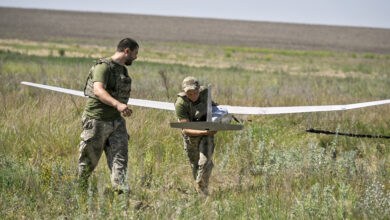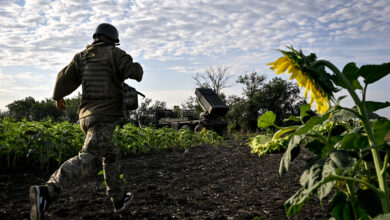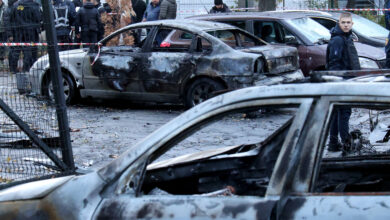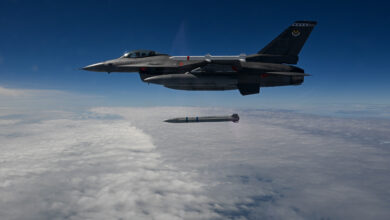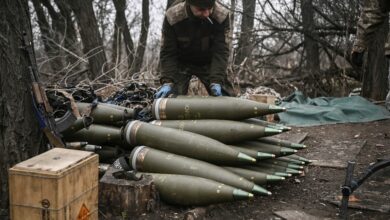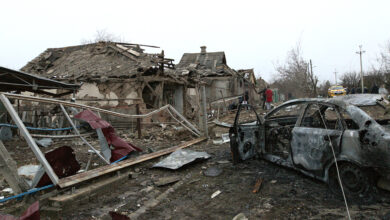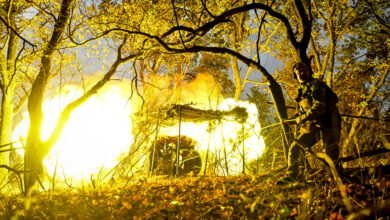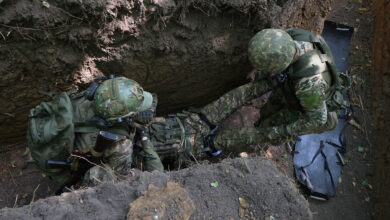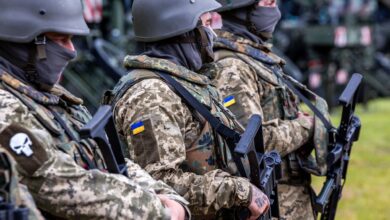Ukraine’s advance on the left bank of the Dnipro River occupied by the Russian army is a success after months of a grueling counteroffensive but could be difficult to transform into a real breakthrough, experts say.
Both Ukraine and Russia said last week that Kyiv’s forces established a presence on the eastern bank of the Dnipro.
On Sunday, the Ukrainian army said it had pushed Russian soldiers back “three to eight kilometers” from the banks of the river, which would be the first meaningful advance by Kyiv’s forces in months.
Almost half a year into the so far slow-moving counteroffensive launched by Kyiv in June, it was a major success for Ukrainian forces who crossed the vast river in small speedboats.
“Ukraine’s overall task on the left bank is to launch an offensive operation there in order to go to (the Ukrainian Black Sea peninsula of) Crimea,” which Russia annexed in 2014, Vilnius-based Russian military observer Michael Nacke told AFP.
But, he added, “it’s impossible to say what the situation will look like in the future, because a lot depends on the decisions both sides will make.”
He said that Ukraine had managed to establish a “fairly extensive bridgehead on the left bank” and was battling to expand it.
Russian troops were suffering losses at the hands of Ukrainian forces on a hill on the right bank, Nacke said.
‘Small Victories’
Vladimir Saldo, the top Russian-installed leader in the part of Ukraine’s Kherson region occupied by Moscow, last week said dozens of Ukrainian soldiers had established positions on the outskirts of the village of Krynky on the left bank.
He downplayed the development, сlaiming that Ukrainian soldiers deployed on the left bank lived just “a bit over two days” on average.
Many analysts say the territory controlled by Ukrainian troops is too small.
Michel Goya, a military expert and former colonel in the French army, said the Ukrainian operation was “rather limited, rather symbolic.”
However, it “allows us to proclaim small victories after the failure of the main Ukrainian offensive,” he added.
According to two sources in the French army and intelligence, the village of Krynky does not appear to be a priority for Moscow, with the Russians concentrating on the city of Avdiivka in the eastern region of Donetsk.
For weeks the Russian army has been seeking to encircle the shattered city in the country’s industrial heartland, according to the Ukrainian General Staff.
Alexander Khramchikhin, a Moscow-based military analyst, called Ukraine’s gains on the left bank “microscopic” and insufficient for Kyiv to deploy more equipment.
“If there is no equipment, there is no offensive,” Khramchikhin told AFP.
‘Severing Supply Routes’
Military analysts say that to convert its current success into a real breakthrough, the Ukrainian army must deploy more men on the left bank by crossing the wide river and then navigating the difficult marshy terrain.
Nacke said that Kyiv immediate task was “to sever Russian supply routes.”
“It is possible to do this,” he said. “They are constantly expanding their bridgehead in order to do that,” he said.
He said Russia had suffered significant losses in the southern Kherson region.
Ukrainian and Russian forces have been entrenched on opposite sides of the river in the Kherson region for more than a year after Russia withdrew its troops from the western bank last November.
Goya said that the Ukrainian operation “maintains the pressure on the Russians, who are obliged to shift part of their reserves to the Dnipro, to the detriment of other sectors of the front.”
Ukraine will need to deploy thousands of men and heavy vehicles on the left bank if it is to open a direct route to Crimea, analysts said.
“A major challenge for Ukraine is to ensure sustained operations of larger formations above company level,” said Ukrainian analyst Mykola Bielieskov.
“Equipment and logistics bridges over the Dnipro are necessary – and any makeshift bridges would be vulnerable to Russia’s air and land firepower which are not suppressed fully.”



